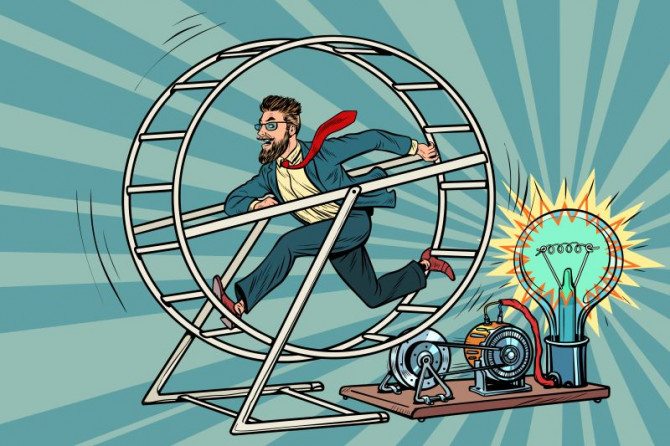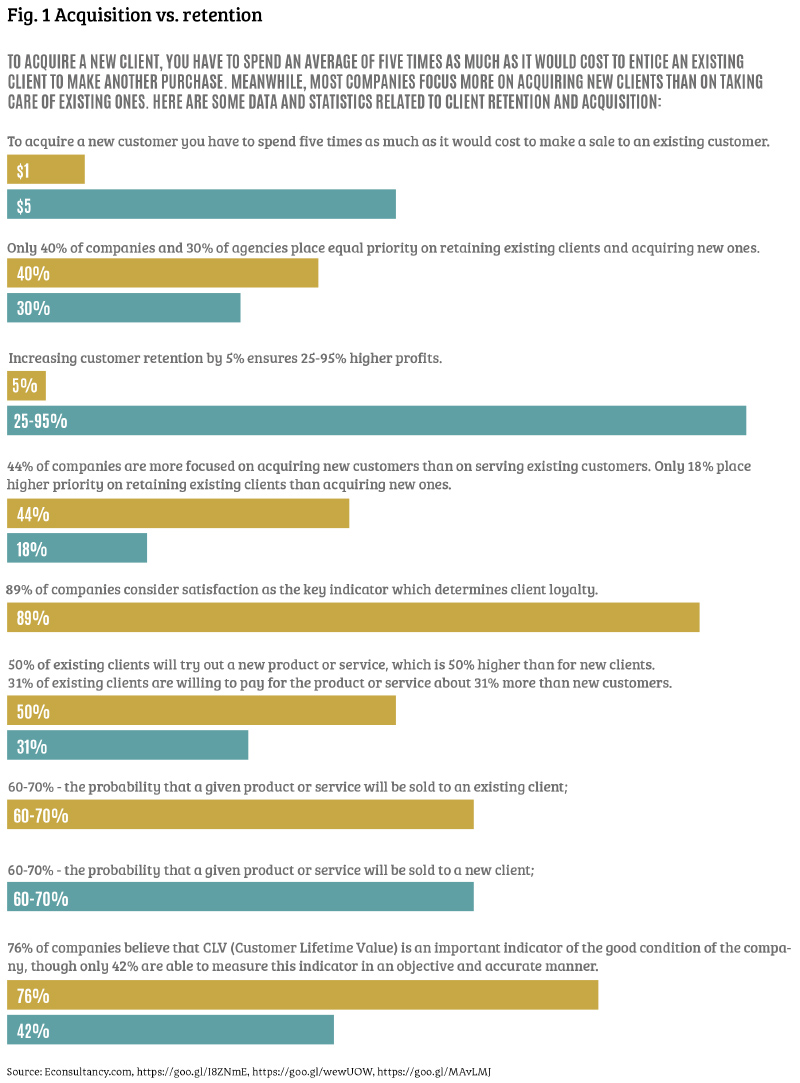B2B client loyalty
Getting a new client doesn’t mean they will stay with you forever. Holding the client using provisions in the sales agreement isn’t a good solution either. What can you do to ensure that the business relationship you’ve built lasts for a long time and allows you to build a healthy business based on predictable income?
Dostępny jest przetłumaczony materiał kliknij tutaj, aby przejść do materiału.

A client who uses our product or service for a long time is much more valuable than one who only makes a one-off purchase. In addition, it’s much cheaper to retain an existing client and persuade them to make another purchase than it is to acquire a new client. And if that wasn’t enough, a survey conducted at over 250 B2B companies by the organization Loyalty3601 shows that three-quarters of respondents acquire about 20 percent of their new clients through recommendations from existing clients. Does that mean it’s not worth focusing too much on looking for new clients? Of course not; nevertheless, if we manage to retain enough clients for the long term, we ensure ourselves more predictable and stable incomes. That, in turn, will directly translate into keeping your company in good condition.
Client loyalty - the two decisive factors
HubSpot, a company offering online marketing tools, points out that client loyalty is determined by the two elements described below, which are much more important than gift cards, loyalty programs and discounts2. The latter works primarily for those in the B2C sector, whose relations with clients are often transaction transactional. What should you do to ensure loyalty in B2B?
1. Make sure they benefit
If, from the moment of purchase, clients regularly benefit from product or service, that’s a sign that they will probably cooperate with us for the long term. It’s worth making sure of that, ideally immediately after purchase. This can be described as a ‘business honeymoon’ - the client is excited about the new purchase and what it provides their company. Taking advantage of this moment, we can make sure that the customer actually uses our product properly, especially if it’s a solution with a wide range of capabilities (e.g. cloud computing software). We should be aware of the fact that our solution is new to the client, and that they may not yet have the knowledge necessary to use it in the optimal way. We should help.
Example:
The company Ahrefs.com offers a tool for website analysis and search engine optimization (SEO). After purchasing the service, we receive cyclical e-mails from the head of marketing containing useful advice related to the best possible use of the tools and functions offered. It is worth doing the same, creating and providing clients with content to help them better understand and benefit from our offer.
2. Care about communication
Educating your customers goes hand-in-hand with open and direct communication. If we build and maintain a good relationship with the client, we nurture their loyalty to a greater extent than if we merely offered them a loyalty program or discounts. In the B2B sector, it’s important that communication not only take place with the person who, for example, created an account on our website and made a payment. Our goal should be to maintain communication with the entire company, and above all with people who make decisions for the company, those who influence the opinions of others, and those who use our solution. To approach holistically, we can offer the customer various environments for exchanging opinions, including forums and closed groups on Facebook or LinkedIn. The more opportunities for dialogue we create, the better. An additional benefit: after creating environments for exchanging opinions, we notice which sorts of clients are the most engaged. This knowledge will be useful in subsequent activities related to acquiring new clients and leads - we will know to whom or to which industry marketing activities should be addressed.
Example:
Oracle, which specializes in IT solutions, has created its own online forums where managers, IT professionals, and IT administrators can communicate. In short: all clients. According to the service MarketingProfs, after implementing the solution to increase client engagement, Oracle improved retention by more than 20%3.
Wykorzystałeś swój limit bezpłatnych treści
Pozostałe 59% artykułu dostępne jest dla zalogowanych użytkowników portalu. Zaloguj się, wybierz plan abonamentowy albo kup dostęp do artykułu/dokumentu.







 Zaloguj się
Zaloguj się








